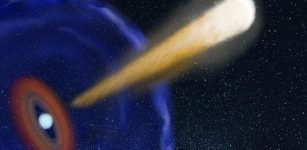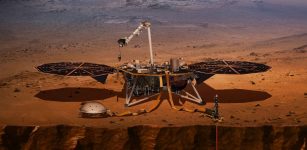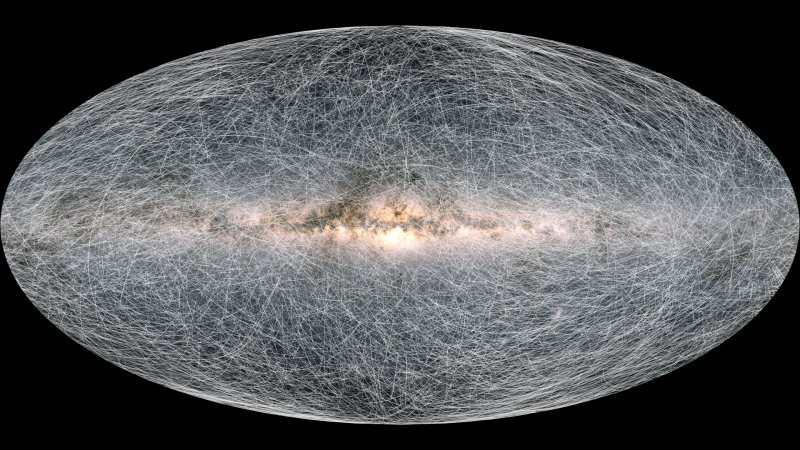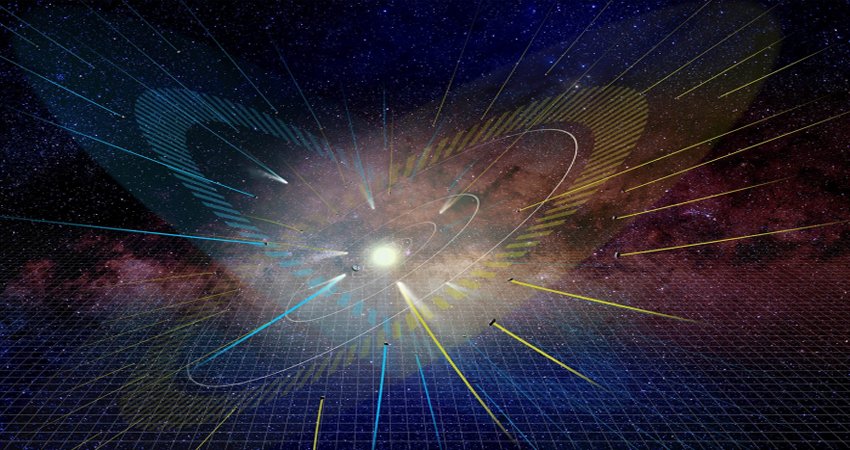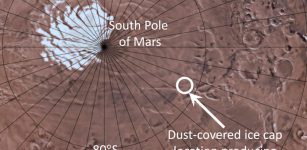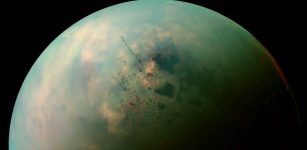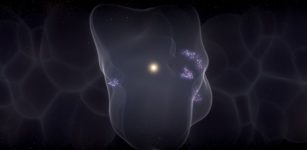New Study Of HR 5183 System About 103 Light-Years Away In Virgo Constellation
Eddie Gonzales Jr. – MessageToEagle.com – A gigantic planet in wild orbit does not preclude the presence of an Earth-like planet in the same solar system – or life on that planet, according to new research
The research led by Stephen Kane, associate professor of planetary astrophysics at UC Riverside, focused on a planetary system called HR 5183, which is about 103 light-years away in the constellation of Virgo.
 A simulation of HR 5183b’s brightness in the night sky as compared to Venus, one of the brightest objects visible from Earth. Credit: T. Mocnik / UCR
A simulation of HR 5183b’s brightness in the night sky as compared to Venus, one of the brightest objects visible from Earth. Credit: T. Mocnik / UCR
It was there that an eccentric giant planet was discovered earlier this year. Normally, planets orbit their stars on a trajectory that is more or less circular.
Sometimes, planets pass too close to each other and knock one another off course. This can result in a planet with an elliptical or “eccentric” orbit. Traditionally, a giant planet in eccentric orbit is like a wrecking ball for its planetary neighbors, making them unstable, upsetting weather systems, and reducing or eliminating the likelihood of life existing on them.
This assumption was questioned by Kane and Caltech astronomer Sarah Blunt who tested the stability of an Earth-like planet in the HR 5183 solar system and calculated the giant planet’s gravitational pull on an Earth analog as they both orbited their star.
“In these simulations, the giant planet often had a catastrophic effect on the Earth twin, in many cases throwing it out of the solar system entirely,” Kane said in a press release.
“But in certain parts of the planetary system, the gravitational effect of the giant planet is remarkably small enough to allow the Earth-like planet to remain in a stable orbit.”
The team found that the smaller, terrestrial planet has the best chance of remaining stable within an area of the solar system called the habitable zone — which is the territory around a star that is warm enough to allow for liquid-water oceans on a planet.
Their findings increase the number of places where life might exist in the solar system described in this study. This is also an exciting development for people who simply love stargazing.
HR 5813b takes nearly 75 years to orbit its star and when this giant finally swings past its smaller neighbor would be a breathtaking, once-in-a-lifetime event for all stargazers.
“When the giant is at its closest approach to the Earth-like planet, it would be fifteen times brighter than Venus — one of the brightest objects visible with the naked eye,” said Kane. “It would dominate the night sky.”
Written by Eddie Gonzales Jr. – MessageToEagle.com Staff

